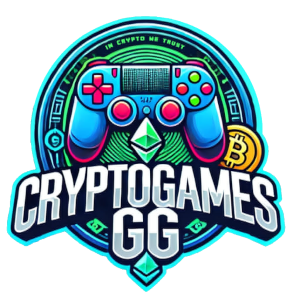In the neon-lit arcades of the 1980s, gaming was a straightforward deal: plunk down $50 for a cartridge, and that pixelated world was yours to keep—no subscriptions, no server outages, just pure ownership etched in plastic. Fast-forward to the 2010s, and the industry pivoted to “free” games. This seductive mirage hooked billions with microtransactions, ads, and battle passes, turning players into tenants of digital realms they’d never truly own. Now, in 2025, a new chapter is unfolding. Web3 gaming, powered by blockchain, is ushering in a “play-to-own” era where players aren’t just consumers—they’re stakeholders with real control over their digital assets. Platforms like @OpenLoot are at the forefront, stripping away crypto’s complexity with seamless, walletless systems that let gamers own, trade, and thrive. This isn’t just a monetization shift; it’s a redefinition of what gaming means in a world craving true value.
The 1980s: The Golden Age of Ownership
Rewind to 1985. A kid in a mall arcade swaps a crisp $60 bill for a Nintendo cartridge—Super Mario Bros., maybe—and walks away with a tangible piece of gaming history. No internet, no patches, no paywalls; just you, a console, and a world to conquer. This was the era of upfront purchases, where ownership was as solid as the plastic in your hands. The global gaming market, fueled by arcade quarters and home consoles, grew from $30 million in U.S. arcade revenue in 1982 to $5 billion by decade’s end, per industry estimates. Hits like Pac-Man or Zelda sold millions of units, their value locked in limited shelf space and publisher scarcity.
But the model wasn’t bulletproof. Piracy—think copied floppy disks or VHS tapes—ate into profits, and the 1983 Atari crash obliterated 80% of developers, exposing the risks of a one-and-done revenue stream. The seeds of change were sown with early expansions, like PC game mods in the 1990s, but the cartridge era’s ethos—pay once, own forever—held strong until the internet flipped the script.

The 2010s: The Free-to-Play Trap
By the early 2010s, “free” became gaming’s mantra. Titles like Fortnite and mobile giants like Candy Crush ditched upfront costs, luring billions with zero-barrier entry. The catch? Revenue came from in-app purchases (IAPs), ads, and randomized loot boxes—psychological hooks that turned playtime into a slot machine. By 2019, free-to-play (F2P) games generated $100 billion annually, with mobile alone claiming 70% of that, per Newzoo. Console franchises followed suit: A single mode in FIFA raked in $1.6 billion yearly through card packs, dwarfing base game sales. Subscriptions like Xbox Game Pass promised “unlimited” access, while rewarded ads in casual titles padded profits.
The cost was steep. Players spent thousands on virtual goods that vanished when servers shut down—a stark contrast to the 1980s’ enduring cartridges. Pay-to-win mechanics sparked outrage, prompting bans on loot boxes in countries like Belgium by 2018. By 2020, the industry hit $159 billion, but the F2P model felt like a gilded cage: accessibility at the expense of ownership, with developers holding all the keys. Gamers were hooked, but resentment simmered.
The 2020s: Play-to-Own and the Web3 Promise
Enter the 2020s, where blockchain is rewriting gaming’s economic DNA. The play-to-earn (P2E) craze of 2021—think Axie Infinity‘s $1.3 billion peak—imploded by 2023, with daily active wallets crashing 85% as tokenomics collapsed. But the wreckage birthed a smarter vision: “play-to-own,” where blockchain ensures players own their assets as tradeable NFTs, portable across games and immune to server whims. By 2025, Web3 gaming is no longer a niche experiment; it’s a $40 billion slice of the $184 billion industry, projected to hit $60 billion by 2030, per DappRadar.
This shift isn’t just about tech—it’s about empowerment. In Web3 games, your sword, skin, or virtual land is yours via ERC-721 or ERC-1155 standards, tradeable on marketplaces like OpenSea for real-world value. Communities influence development through DAOs, voting on updates or revenue splits. Unlike F2P’s walled gardens, Web3’s interoperability lets assets move between titles, while AI-driven mechanics—think NPCs that evolve with your playstyle—add depth. Chains like Ronin and Base cut transaction fees, making mobile Web3 viable, with 21% of 2024’s launches on platforms like Telegram.
Yet, adoption isn’t universal. Regulatory uncertainty and gamer skepticism—70% still avoid crypto wallets—pose hurdles. X posts reflect the divide: “Web3 gaming is freedom from publisher greed,” tweeted @CryptoGamerX, while @OldSchoolGuru laments “NFTs ruining pure fun.” The truth lies in execution: Success hinges on games prioritizing playability over profit.
OpenLoot: The Engine of Play-to-Own
At the heart of this revolution is @OpenLoot, a Web3 platform making ownership intuitive. Born from Big Time Studios, it powers a growing ecosystem of games with a shared infrastructure: walletless onboarding, low-fee NFT trading, and developer tools that handle everything from payments to compliance. Its patented Vault tech lets players buy, sell, or rent assets without wrestling gas fees or private keys—think trading a rare armor set as easily as buying a Fortnite skin, but with real ownership. @OpenLoot’s X updates highlight its impact: Guild events drive community play, and its $OL token, launched in 2025, fuels rewards, with over $500 million in transaction volume already.
Unlike F2P’s extractive model, @OpenLoot’s marketplace lets players earn from their skill and time. Developers benefit too—APIs streamline Web3 integration, letting studios focus on crafting immersive worlds. As @Web3Vibes tweeted, “@OpenLoot’s making Web3 feel like Web2, but you actually own your loot.” From guild-driven RPGs to competitive arenas, it’s bridging the gap between crypto-curious and mainstream gamers, with titles hitting platforms like Epic Games Store to lure traditional crowds.
The Road Ahead: A Player-Owned Future?
The 1980s gave us possession—cartridges as keepsakes. The 2010s gave us access, but at the cost of control. The 2020s offer empowerment, with Web3 turning players into co-owners of the games they love. @OpenLoot embodies this shift, blending the camaraderie of guild halls with the economic stakes of blockchain. A sword earned in one game might fund your next adventure elsewhere; a community vote could shape a title’s next season. It’s the 1980s’ ownership ethos, supercharged for a digital age.
Challenges persist—scalability, regulation, and gamer distrust could stall momentum. But the numbers don’t lie: Web3’s market share is climbing, and platforms like @OpenLoot are lowering barriers. As Q4 2025 brings more blockchain titles to consoles and mobile, the line between “gamer” and “investor” blurs. This isn’t just a monetization pivot; it’s a cultural one. Dust off that old NES mindset, jump into a Web3 world, and play like you own it—because with @OpenLoot, you finally do.












